Characteristics
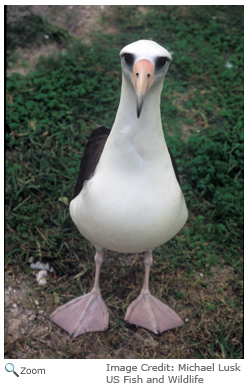 The Laysan albatross is a little more than two feet in length and has a wingspan of over six feet. It has black wings and tail, a white head and body, pink legs, and webbed feet. The Laysan albatross is a little more than two feet in length and has a wingspan of over six feet. It has black wings and tail, a white head and body, pink legs, and webbed feet.
There is a soft gray and black patch around and under its eyes. It has a large gray to yellow-orange bill with a black, hooked tip. Males and females look alike.
Range
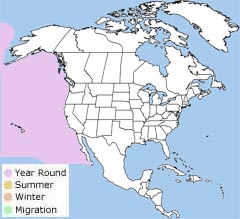 The laysan albatross breeds on islands in the mid-Pacific, especially islands in the Hawaiian chain. Occasionally it can be seen in the waters of the North Pacific and the Gulf of Alaska. The laysan albatross breeds on islands in the mid-Pacific, especially islands in the Hawaiian chain. Occasionally it can be seen in the waters of the North Pacific and the Gulf of Alaska.
Habitat
The laysan albatross lives an open ocean waters and breeds on islands.
Diet
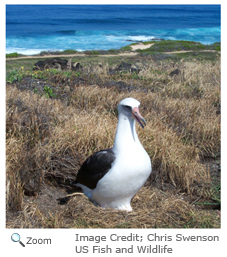 The laysan albatross eats squid, but it also eats crustaceans, fish eggs and fish. It is a surface feeder. It scoops up its prey from just under the surface of the water. It does most of its feeding at night. The laysan albatross eats squid, but it also eats crustaceans, fish eggs and fish. It is a surface feeder. It scoops up its prey from just under the surface of the water. It does most of its feeding at night.
|
|
Life Cycle
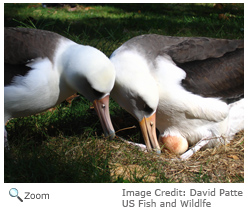 From November through July, Laysan albatrosses gather in large colonies on offshore islands in the Pacific Ocean. The female Laysan albatross lays one egg in a depression in the sand. From November through July, Laysan albatrosses gather in large colonies on offshore islands in the Pacific Ocean. The female Laysan albatross lays one egg in a depression in the sand.
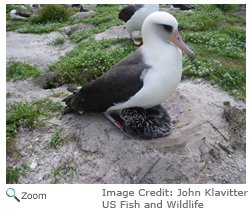 Both the male and the female incubate the egg. The female incubates the egg for the first few days. Then the male takes over for as many as three weeks. The chick hatches in about two months. Both parents feed the chick regurgitated food, primarily squid oil and flying fish eggs. Both the male and the female incubate the egg. The female incubates the egg for the first few days. Then the male takes over for as many as three weeks. The chick hatches in about two months. Both parents feed the chick regurgitated food, primarily squid oil and flying fish eggs.
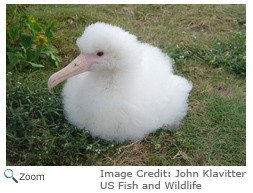 Both parents may leave the chick for days at a time to hunt for food. The chick fledges in about five months. The Laysan albatross has a life span of 12-40 years. Both parents may leave the chick for days at a time to hunt for food. The chick fledges in about five months. The Laysan albatross has a life span of 12-40 years.
Behavior
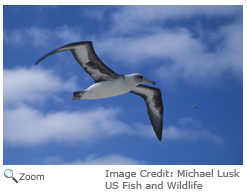 The laysan albatross only comes to land to breed. It spends most of its time on the open ocean 30 or more miles from land. Once a chick leaves the nest and heads to open waters, it won't return to land for three to five years, when it is ready to find a mate. It will return to its nesting colony and search for a mate using elaborate mating dances. It won't mate for the first time until it is between six and seven years old. Laysan albatross mate for life. The laysan albatross only comes to land to breed. It spends most of its time on the open ocean 30 or more miles from land. Once a chick leaves the nest and heads to open waters, it won't return to land for three to five years, when it is ready to find a mate. It will return to its nesting colony and search for a mate using elaborate mating dances. It won't mate for the first time until it is between six and seven years old. Laysan albatross mate for life.
|